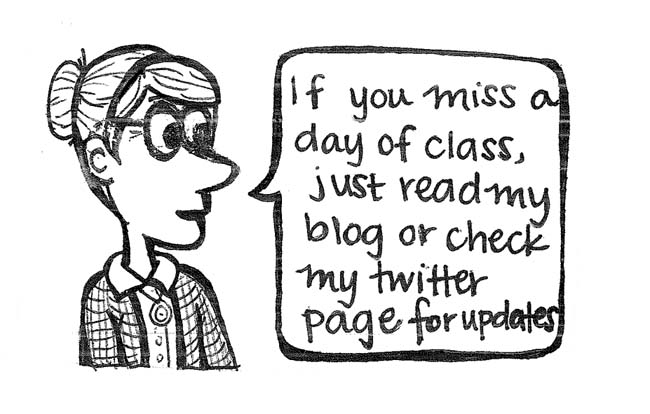As the chaos of the first weeks of classes gradually dies down, we have all formed first impressions of each of our courses for the semester. Although we may have registered months ago, it is not until we skim through the syllabus for the first time that we feel confident — or not so confident — about the structure, workload and style of the class and professor. While many factors affect the overall dynamic of a class, an important one that always sparks debate is the use of technology in class, by both professors and the students. Both sides of the “technology in the classroom” debate have merit, but in the end, it is still up to the professor and the students to make the class worthwhile.
I have had both extremes of professors at the College of William and Mary — those who never even use the Blackboard site and only believe in writing on a real blackboard and those who use as much technology as possible, both in lectures and assignments, to enhance their course. Using technology for effective communication is key for all professors. It is frustrating when professors are delayed in responding to emails or don’t have important course information and documents uploaded to Blackboard. However, in the past, these inconveniences have forced me to go to the professor and ask my questions in person. For our technology-minded generation, learning to embrace face-to-face conversations — with people other than our friends and family — is important. That being said, receiving a quick email response from a professor five minutes after you sent it, even late at night, is incredibly convenient, especially when going to their office is not an option. Luckily, most professors have adapted to at least this basic use of technology for their classes.
As for during the actual class, I’ve found myself frustrated with professors who insist on writing illegibly on chalkboards, as well as with professors who zip through a Powerpoint presentation with too many animations. In this regard, I’ve come to the conclusion that it truly depends on the professor. Overall, I prefer a class with less technology because it usually promotes better discussion and interaction than if students are watching a Powerpoint show or surfing the internet on their laptops. However, if a teacher is able to use technology to make the class more interactive or appealing to students, then I’d prefer that to a strict no-technology policy.
No professor will ever use technology in the exact same way or to the same extent as another. As long as professors can be reached using technology, the way they choose to incorporate technology into their class shouldn’t matter. In fact, it is more detrimental when professors use technology only for the sake of using it, which often ends up detracting from the class as a whole.
Email Elaine Oestreich at ecoestreich@email.wm.edu.

